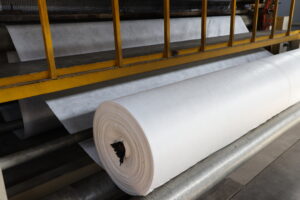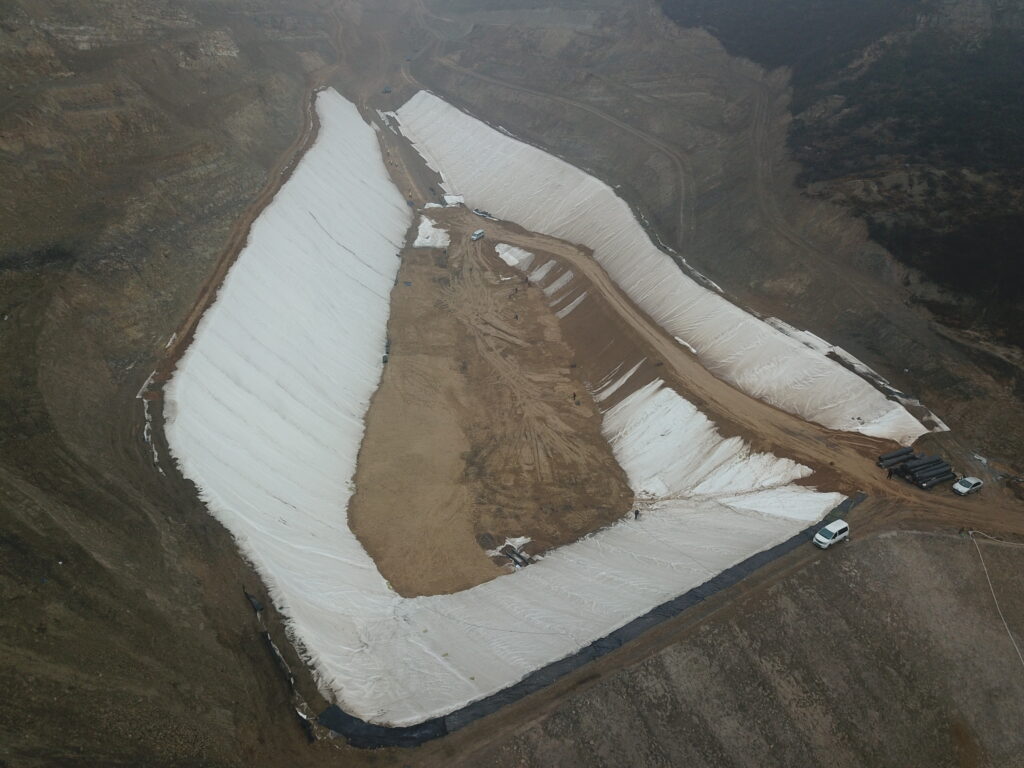Is geotextile fabric plastic?
Yes, geotextile fabrics are usually plastic or synthetic fibers. Common geotextile materials include polypropylene (PP), polyester (PET), polyethylene (HDPE, LLDPE) and other plastic materials. These materials have the characteristics of corrosion resistance, good weather resistance, and high tensile strength, making geotextiles widely used in civil engineering and environmental engineering.
The specific choice of geotextile material depends on the needs of the project and environmental conditions. For example, for applications requiring greater strength and durability, materials such as polyester or polypropylene may be chosen. In some special projects, materials such as glass fiber may also be used as the base material of geotextiles.
Generally speaking, the plastic materials of geotextiles can provide excellent physical and mechanical properties and meet the requirements for waterproofing, reinforcement, isolation and other functions in civil engineering.
What is the use of geotextile?
Geotextile is a specialized fabric material used in civil engineering and environmental engineering that has a variety of uses. Its main function is to isolate, filter, strengthen, protect and drain the soil. Here are some of the main uses of geotextiles:
Anti-seepage and isolation: Geotextiles are widely used in waterproofing projects, such as dams, reservoirs, river embankments, etc., to prevent water from penetrating into the soil. It can also be used to prevent mutual penetration between different soil layers or materials and achieve soil isolation.
Filtration: Geotextile can be used as a filter layer to prevent particles in the soil from being washed away or penetrated by water flow, while allowing water to pass through, thereby preventing the loss of soil particles.
Reinforcement and Stabilization: In civil engineering, geotextiles are often used to enhance the strength and stability of soil. It can strengthen the soil structure and slow down the settlement and deformation of the soil by providing tensile strength and increasing the shear strength of the soil.
Protection: Geotextiles can be used to protect river banks, coastlines, soil slopes and other places prone to erosion, slow down or prevent soil erosion, and improve the stability of the ground surface.
Soil drainage: Geotextiles can be used in drainage systems to promote drainage within the soil and prevent moisture from accumulating in the soil, thereby reducing the risk of liquefaction of the foundation soil.
Settlement control: In some projects, geotextiles can be used to slow down foundation settlement by increasing the shear strength and stability of the soil, thereby reducing the settlement rate of the soil.
Landfills: Geotextiles are widely used in landfills as an anti-seepage layer to prevent liquids in waste from seeping into groundwater or soil, thereby reducing environmental pollution.
Land Reclamation: In mining areas or other damaged land, geotextiles can be used to help restore the land, prevent erosion, and improve soil quality.
Generally speaking, geotextiles play multiple roles in civil engineering and environmental engineering, providing important support for the safety, sustainability and environmental protection of projects.

What is geotextile made of?
Geotextile is a geotechnical material made of synthetic fiber materials, mainly including polypropylene (PP) and polyester (PET). These synthetic fibers are formed into geotextiles with specific structures and properties through different processing methods, such as needling, hot melting or chemical bonding.
Here are some common synthetic fiber materials that geotextiles may be made from:
Polypropylene (PP): Polypropylene is a common synthetic fiber material that is lightweight, resistant to chemical corrosion, and anti-aging. Geotextiles are formed by needle-punching or hot-melting polypropylene fibers to achieve high tensile strength and good water permeability.
Polyester (PET): Polyester is a synthetic fiber with good strength and durability that is commonly used in the manufacture of geotextiles. Geotextiles can be made by hot-melting, needling or chemically bonding polyester fibers to achieve different physical and mechanical properties.
Nylon: Nylon is a strong, abrasion-resistant synthetic fiber that is sometimes used in the manufacture of geotextiles. Nylon geotextiles generally have high tensile strength and durability.
Fiberglass: In some special application scenarios, geotextiles may use fiberglass as the base material. Fiberglass geotextile has excellent temperature resistance, corrosion resistance and anti-aging properties.
Polybutadiene rubber (SBR): Sometimes the base material of geotextile may also be made of polybutadiene rubber synthetic fibers. This material is often used in special environments, such as where corrosion resistance is required.
The manufacture of geotextiles usually involves the initial shaping of the fibers and subsequent processing to ensure that they have the required physical and mechanical properties. The choice of geotextile material and construction will depend on specific project needs and environmental conditions. The combination and processing methods of these materials make geotextiles widely used in fields such as water conservancy projects, basic projects, and soil and water conservation.


